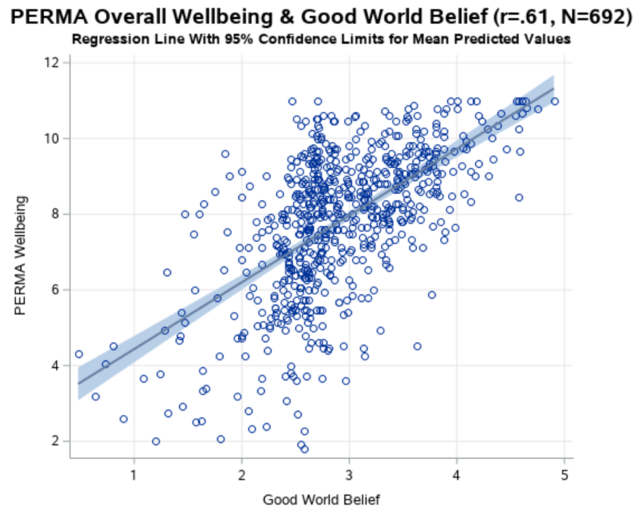Depression
Should We Teach Kids That the World Is Dangerous?
A new study shows many parents do it. And maybe shouldn’t.
Posted February 4, 2022 Reviewed by Tyler Woods
Key points
- 11% to 53% of surveyed parents aim to teach their kids the world is a bad place, including that it is dangerous, cut-throat, and getting worse.
- Among parents preferring positive world beliefs, 50% to 94% want to teach kids the world is only slightly good—a moderate approach.
- A big correlational study—6 samples, 4,535 study subjects, 48 professions—casts doubt on both parenting strategies.
- Main study author discusses how results informed his own parenting.
My family has had its fair share of hardship. So, for a couple of generations now, parents have taught kids a line to prepare them for the real world. My grandfather-in-law was a combat dentist in World War II, and he taught it. My father-in-law left home at 14 and picked tobacco to pay his way through high school, and he taught it. Now, my wife and I are deciding whether to teach it to our 3-year-old. The line is:
Life’s a sh$t sandwich, and you just took your first bite.
The underlying idea here is simple enough: if you want your kids to succeed and find happiness in life, teach them the world is pretty awful—best get used to it and keep expectations low.
It turns out this parenting strategy is common (if not the colorful language). In a study published last month, we asked parents what basic world beliefs they thought were best for their kids. Researchers call these beliefs "primals" or "primal world beliefs" because they’re so fundamental, with most boiling down to the degree to which you see the world as good or bad.
We found that substantial subsets of parents (11 to 53 percent, depending on the primal world belief) aimed to teach their kids that the world is in different ways a bad place: barren, unfair, dangerous, not very funny, brutally cut-throat, and getting worse and worse. Further, most parents (50 to 94 percent) wanted to avoid very positive world beliefs for their kids, the idea being that seeing the world as slightly good was helpful, but seeing it as very good was unhelpful: moderation in all things.
Why do parents think positive world beliefs will hurt their kids?
In the journal article, we paraphrase the three top reasons we’ve heard from different study subjects over the years about their beliefs of the world. These concern success, health, and wellbeing.
- People usually don’t succeed in my job without a darker view of things (sometimes heard from business people, lawyers, etc.).
- Seeing the world as safe, where everyone sings “Kumbaya,” leaves you vulnerable to predation, germs, illness, and death—you gotta stay vigilant (sometimes heard from healthcare workers, cops, etc.).
- Seeing the world as some amazing place often leads to disappointment, which can make you depressed and lose hope—best keep expectations low (incidentally, this is also a near-verbatim quote from my car mechanic).
We suspect parents connect negative world beliefs to helping ensure positive outcomes for themselves and their children for two reasons. The main one is causal: they think seeing the world as bad leads causally to good stuff. This is really hard for researchers to test right now for a bunch of reasons.
The second assumption, however, is probabilistic: they think really successful people are often those who “get it” (i.e., see the world as bad), suicidal people are often those who got their unrealistically rosy outlook shattered, and so forth.
This second assumption is readily testable and desperately needs testing. Primal world belief research is very new (the first big paper came out in 2019), and researchers are still uncovering how our world beliefs correlate to life outcomes. But one thing we've already discovered is that success, health, and wellbeing probably don’t change your primal world beliefs that much. Primals seem to function more like lenses you use to interpret your life, rather than mirrors that reflect what your life has been.
So we did a big search—6 samples, 4,535 study subjects, 48 professions—trying to identify when seeing the world as bad was tied to worse outcomes, running nearly 4,000 statistical analyses and looking at an array of outcomes ranging from depression in secretaries to promotions among police officers.
Findings

We found that, across the board, people with negative world beliefs were, on average, worse off. They had poorer health, more negative emotions, much more depression, more suicide attempts, much less life satisfaction, and dramatically less well-being (see graph), all while disliking their jobs and performing slightly worse at them compared to peers in their profession. There was also no discernable upside to moderate beliefs. We ran hundreds of statistical tests comparing those who see the world as slightly good to those who see it as very good, and found that, on average, people with moderate beliefs were worse off.
In sum, parents might want to know that if your kid grows up to see the world as an overall dangerous place, she is also likely to be worse off compared to her peers.
This research has limitations. A big one is that it’s not longitudinal—I’d love to measure kids’ world beliefs now and outcomes later. Another is that data is self-reported—I’d love to measure health outcomes more directly. Way more research is needed before anyone can claim the science is telling everyone to stop teaching kids that the world is bad.
Study Author's Personal Takeaway
Conclusive research won’t be finalized for years, probably decades. My own daughter will be all grown, maybe yours too, and it seems unfair to keep my personal takeaways as a parent and scientist entirely to myself. So here it goes:
Sorry ancestors, I’m sure you meant well. But, my best guess from looking at this data is that teaching my girl the world is terrible is a terrible idea. There may be some benefits to seeing the world as bad (such as being more quick to recognize a threat) but these advantages are likely overwhelmed by the costs (such as imagining threats, overreacting, anxiety, missing opportunities, and being risk-averse socially). So, I’m going to try to teach my kids two things:
- There’s a bunch of specific bad stuff you need to watch out for.
- The world is wondrous and life’s a gift. The good things in life don’t just outweigh the bad, they dwarf it. Whenever you lose sight of that, you only need to look around and rediscover the incredible beauty all around you.

We’ll see how that goes. In the meantime, the last line in our study gives me my best intuition on why seeing the world as bad is probably bad for kids: Children cannot escape the world. The only choice that they or any of us have is the power of deciding our attitude toward being here.
References
Clifton, J. D. W., & Meindl, P. (2021). Parents think—incorrectly—that teaching their children that the world is a bad place is likely best for them. The Journal of Positive Psychology. https://doi.org/10.1080/17439760.2021.2016907
Clifton, J. D. W., Baker, J. D., Park, C. L., Yaden, D. B., Clifton, A. B. W., Terni, P., Miller, J. L., Zeng, G., Giorgi S., Schwartz, H. A., & Seligman, M. E. P. (2019). Primal world beliefs. Psychological Assessment, 31(1), 82-99. https://doi.org/10.1037/pas0000639
Clifton, J. D. W. (2020). Testing if primal world beliefs reflect experiences—At least some experiences identified ad hoc. Frontiers in Psychology, 11, 1145. https://doi.org/10.3389/fpsyg.2020.01145




